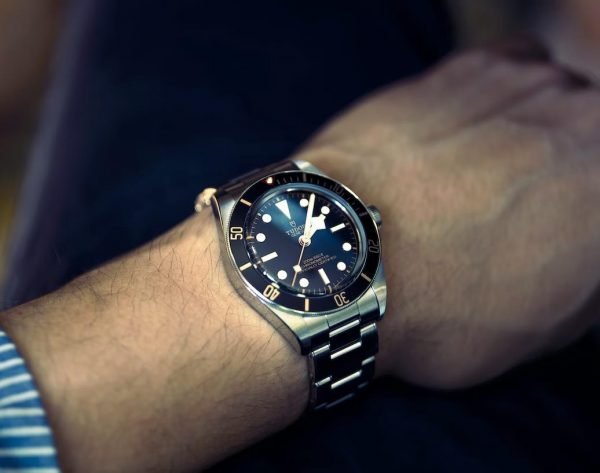Gustav Klimt (1862 – 1918), the Austrian symbolist painter, was one of the most prominent members of the Vienna Secession movement. Klimt is noted for his famous paintings, murals, and sketches, where his primary subject has been the female body. You would expect many cat paintings or other Gustav Klimt artworks depicting cats as he was a great cat lover. But there are no Klimt drawings, paintings, or other artwork with cats as the subject.
Although cats have never been depicted in Gustav Klimt’s artworks, Klimt’s love for cats is legendary. In one of the beautiful photographs of Gustave Klimt, the painter sat with a cat in his arms. The cat in the picture is his favorite cat, Katze.
Klimt was a great cat lover and always had cats around him. As a result, many cats roamed freely around in both his studios. He used the studio in the city center on Josefstädterstraße until 1911, and the second studio in the outskirts on Feldmühlgasse. The cats caused chaos amongst many of his sketches, but he never chased the cats away.
Table of Contents
Did the Cats in his Studios bother Klimt?
Klimt was well aware of the chaos caused to his sketches by the cats running around in his studios. They even damaged many of his sketches. But it did not bother him in the slightest and this time we will learn about painter Klimt as a cat lover. Arthur Roessler, an influential art writer and critic of the time, commented at a stage on Klimt’s relaxed response to the behavior of the cats. Roessler visited Klimt, and during the visit, about eight to ten cats played with the sketches, sending them flying around in the studio.
Klimt’s answer to Roessler’s question whether it didn’t bother him that the cats are running around freely in his studio, was: “No, my friend, even if they crumple and tear one or the other pieces of paper, it doesn’t matter; they only pee on the others, and, you know, it makes the best fixing agent!” (Interestingly, this is not true!)
There are also other versions of this story, according to which Klimt deliberately covered pages of his sketchbooks with cat urine. Unfortunately, however, this rumor could never be verified, and we’ll never know whether that’s true.
Did he have a special Cat?
Klimt was a genuine cat lover. But although he gave home to many cats and thought of all the cats in his studio as pets, he had one particular cat named Katze. He always said that he had eight cats as pets, but Katze was his favorite. This was Klimt’s most beloved cat and was the cat sitting with Klimt for a picture.
He was such a great cat lover that he was even referred to as “the crazy cat lady of artists.” This nickname might be due to his penchant for dressing in long, flowing muumuus, but in some ways, he was the early 1900s male equivalent of the stereotypical crazy cat lady.
Are there other Cat-loving Artists as well?
It was not only Klimt that was an artist with love for cats. Not many art lovers are aware that cats are behind some of the most renowned art pieces. Over centuries it has been agreed that there is no better mouse than a cat.
Some of the greatest artists are proof of that, and they are known to have kept cats as pets, and many even used them in their artwork. For instance, renaissance artists such as Bosch, Dürer, Ghirlandaio, DaVinci, and many others produced famous artworks that included the cat as a character. During the Renaissance, cats were used as domesticity, fertility-lust, betrayal, and evil characters.
In early Christian art, cats symbolized both laziness and lust and deception and betrayal. In some medieval paintings, cats are present in the scene of Eve’s fall in the Garden of Eden.
But cats inspired humanity thousands of years earlier already. They were first domesticated almost ten thousand years ago. The well-known cat god, Bastet, was carved, painted, and sculpted for centuries in ancient Egypt.
Did Cats Influence Klimt’s Artworks?
Klimt’s painting style is very recognizable, especially the style in his so-called Golden Phase. In addition, art critics and academics are sure that his white and black cat, Katze, has contributed to the inspiration he needed to produce some of his most famous paintings like “The Tree of Life” and “The Kiss.”
The Tree of Life – Gustav Klimt
Unfortunately, many of his now-famous pieces weren’t recognized or appreciated until after he died in 1918. He was just never asked, and he never commented on whether cats in general or his favorite Katze had inspired him to create art.
Strange Homage to Klimt – Prints of Cats in Klimt Style
Modern technology makes it possible to create your paintings in the style of specific famous painters. Nowadays, many cat lovers use this technique to “paint” cat pictures in Klimt style. They even sometimes change the faces of the women in some of Klimt’s famous paintings to depict cat faces.
There are also companies producing prints of “Klimt-cats” to be sold online as posters or postcards. These “reproductions” are seen by many Klimt lovers and cat lovers as a homage to Klimt, the painter, and the cat lover.
The Bottom Line
Cats have been part of the art scene for centuries. You can find artworks with cats as the subject in old Egyptian times, in early Christian art, and during the Renaissance up to modern times. Gustav Klimt has not contributed to artworks with cats as subjects, but his love for cats is legendary. It is one of the mysteries around Klimt why he never painted any of his favorite pets. Art academics, however, agree that although he has not depicted any cats, cats – especially his favorite, Katze – have given him the inspiration for many of his works. The bottom line is that Gustav Klimt was a cat lover through and through.





